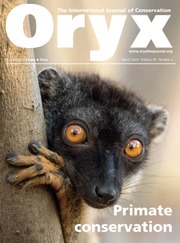Identifying taxa to species within a reasonable timeframe, especially in the biodiverse tropics, remains difficult. Until recently, species identification relied upon countless hours in the field to record and collect samples, and an even greater amount of time identifying and processing specimens. Importantly, these tasks require the help of taxonomists and other biodiversity experts. Recent technological advances, however, have shifted perspectives on identifying and monitoring wildlife. Environmental DNA enables detection of species presence; artificial intelligence facilitates the processing of vast amounts of image, video and acoustic data, and the identification of taxa with minimum human supervision; and drones have made it possible to access previously inaccessible locations. Nevertheless, there have been few attempts to combine these technologies to record and monitor biological diversity in an automated manner.
The XPRIZE Rainforest Competition was a 5-year competition that started in 2019, initially with 300 teams from over 70 countries, with the aim of advancing measurement and monitoring methods for biodiversity, and thus helping to achieve the goals of the Kunming–Montreal Global Biodiversity Framework by 2030. According to the rules of the competition, the teams needed to remotely sample a 100 ha plot of tropical forest within 24 h, without entering the plot, and deliver a final report within the subsequent 48 h. The Limelight Rainforest team, of which we are part, won the competition on 15 November 2024, identifying c. 250 species.
Limelight Rainforest won the competition with a creative combination of emerging technologies that promises to advance the monitoring of biodiversity. Although the process requires the work of biological experts to build local and regional biodiversity databases, the autonomous nature of these technologies facilitates inventory and biodiversity monitoring by any trained user. Limelight Rainforest recorded organisms within the plot using a combination of approaches: drones collected water, air and surface samples for sequencing environmental DNA; audio recordings of bird and bat vocalizations and images of insects were analysed with machine learning algorithms; red-green-blue camera images of tree crowns were processed with artificial intelligence; and drone-delivered canopy rafts collected insect samples that were sequenced for bar-coding and species identification. We believe that the winning solution is highly scalable, will increase the speed and reduce the costs of monitoring biological diversity, not only in tropical rainforests but in other habitats. This, in turn, will augment our understanding of the patterns and causes of global biodiversity loss, em-powering policy-makers and conservationists to ameliorate this loss at local, regional and global scales.

